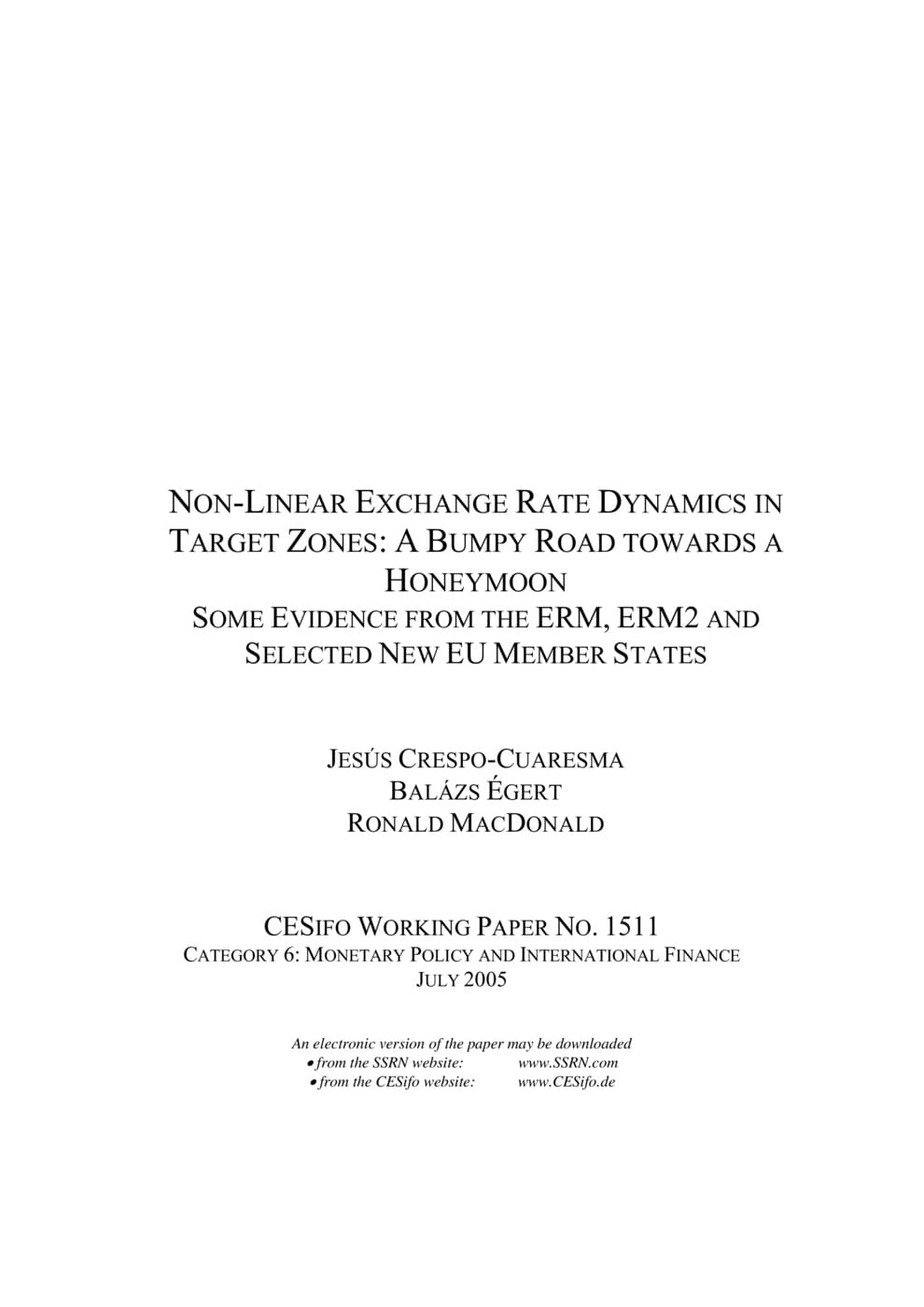Non-Linear Exchange Rate Dynamics in Target Zones: A Bumpy Road towards a Honeymoon - Some Evidence from the ERM, ERM2 and Selected New EU Member States
CESifo, Munich, 2005
CESifo Working Paper No. 1511

This study investigates exchange rate movements in the Exchange Rate Mechanism (ERM) of the European Monetary System (EMS) and in the Exchange Rate Mechanism II (ERM-II). On the basis of the variant of the target zone model proposed by Bartolini and Prati (1999) and Bessec (2003), we set up a three-regime self-exciting threshold autoregressive model (SETAR) with a non-stationary central band and explicit modelling of the conditional variance. This modelling framework is employed to model daily DM-based and median currency-based bilateral exchange rates of countries participating in the original ERM and also for exchange rates of the Czech Republic, Hungary, Poland and Slovakia from 1999 to 2004. Our results confirm the presence of strong non-linearities and asymmetries in the ERM period, which, however, seem to differ across countries and diminish during the last stage of the run-up to the euro. Important non-linear adjustments are also detected for Denmark in ERM-2 and for our group of four CEE economies.